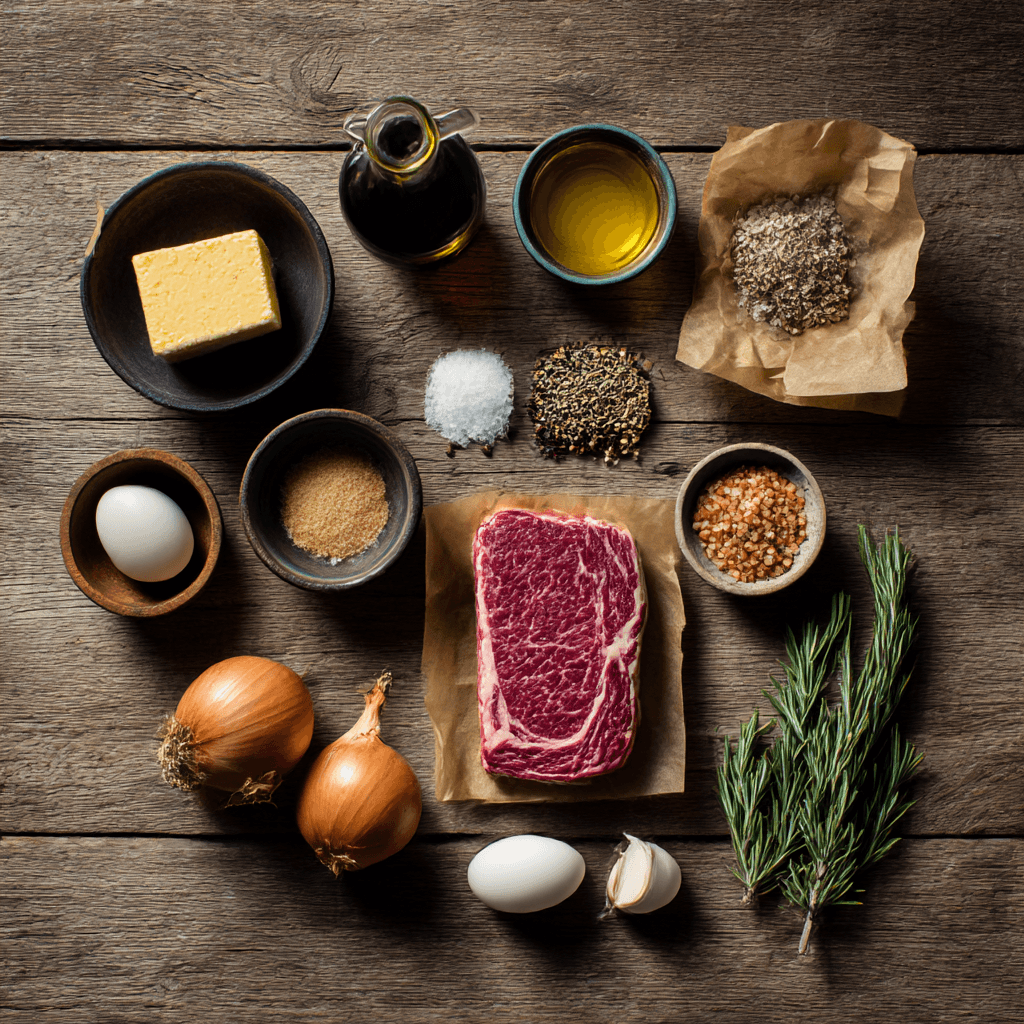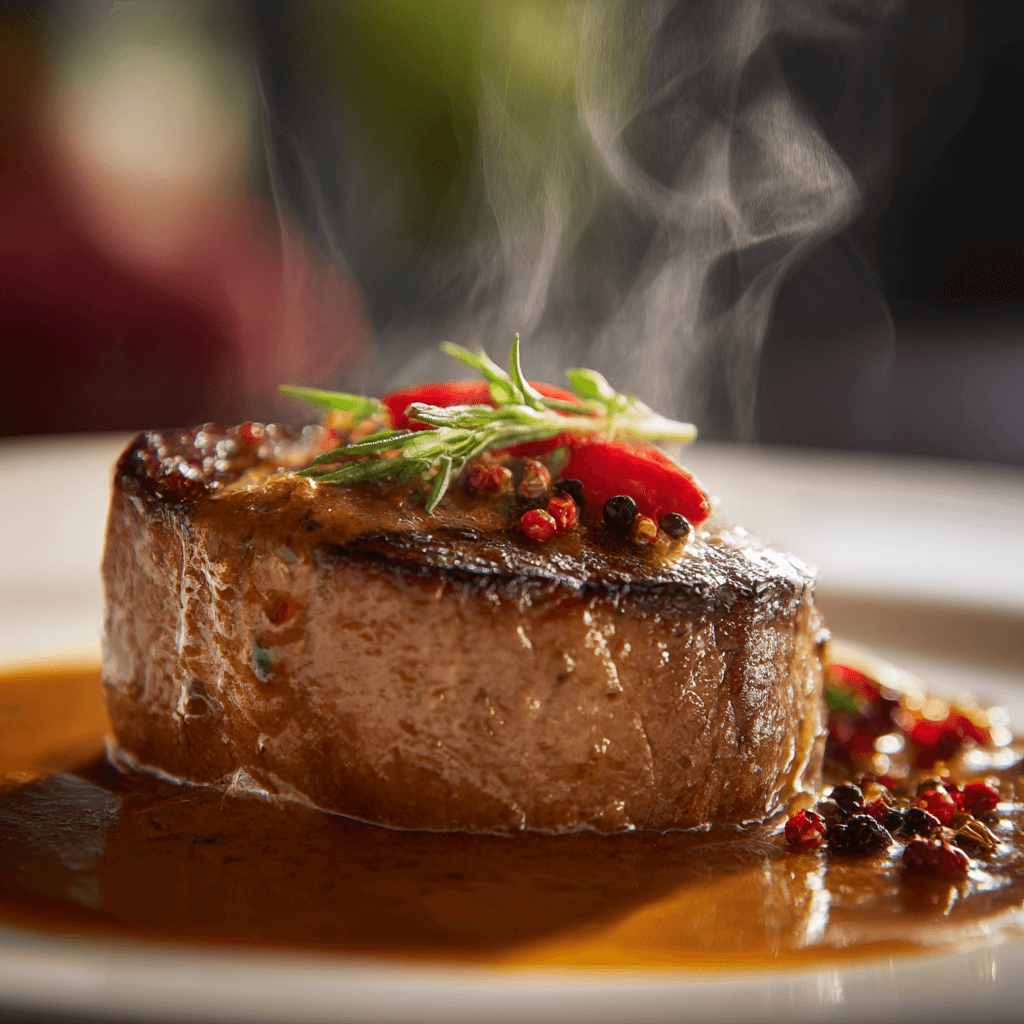Table of Contents
Gordon Ramsay Steak Diane transforms simple ingredients into restaurant magic, but one misstep with that blazing cognac can turn dinner into a kitchen emergency. After twenty years fighting fires and another decade perfecting this classic dish, I’ve learned that respect for flame control makes all the difference. This elegant pan-seared steak with its rich, creamy sauce represents everything I love about professional cooking – precision, timing, and just enough controlled danger to keep things interesting. The dish originated in the 1950s as a tableside spectacle, but Gordon’s modern approach focuses on technique over theater. According to the USDA guidelines for meat safety, proper temperature control ensures both safety and flavor. If you’ve mastered the fundamentals of steak cooking, you might also enjoy the complementary richness of Gordon Ramsay’s Steak Au Poivre, which shares similar pan-searing techniques.
Why This Gordon Ramsay Steak Diane Recipe Works (And Where Most Go Wrong)
The magic of Gordon Ramsay Steak Diane lies in three fundamental principles that separate restaurant-quality results from disappointing home attempts. First, the steak must be pounded to an even thickness – not just for tenderness, but for uniform cooking that prevents those dreaded overcooked edges around a raw center. Second, the sauce timing is everything. Most home cooks make the mistake of building the sauce in a cold pan, but Gordon’s technique requires using the same blazing hot pan with all those caramelized fond bits that develop during searing.
The third principle – and where most attempts fail – is understanding that this isn’t just about flambéing for show. The alcohol serves a critical purpose in deglazing the pan and creating the sauce base. According to Serious Eats’ guide to deglazing, this technique extracts maximum flavor from the pan’s fond, which becomes the flavor foundation of your entire dish. When home cooks skip the alcohol or add it timidly, they miss the chemical reaction that transforms simple cream and mustard into something extraordinary.
Ingredients That Actually Matter for Gordon Ramsay Steak Diane

The steak selection makes or breaks this Gordon Ramsay Steak Diane recipe. Choose ribeye, sirloin, or filet mignon steaks that are 3/4 to 1 inch thick – any thicker and they won’t cook evenly after pounding, any thinner and they’ll overcook before the sauce develops. The marbling in ribeye provides the best flavor, while filet offers the most tender texture. Quality cognac or brandy isn’t just for show; cheap cooking brandy will leave a harsh, bitter note in your sauce that no amount of cream can mask.
Heavy cream must be at room temperature before adding to the hot pan – cold cream will seize and curdle when it hits the blazing fond. Dijon mustard provides the sharp counterpoint to the rich sauce, but avoid grainy country-style mustards that won’t incorporate smoothly. Fresh thyme and quality butter for finishing make the difference between good and restaurant-level results. If you’re building a complete steakhouse experience, consider pairing this with Gordon Ramsay’s Fondant Potatoes for an elevated side dish that matches the elegance of this preparation.
Step-by-Step Instructions for Gordon Ramsay Steak Diane
Begin by pounding your steaks between plastic wrap or parchment paper to an even 1/2-inch thickness using a meat mallet. This ensures uniform cooking and creates the tender texture that defines proper Steak Diane. Season generously with salt and freshly cracked black pepper, then let rest at room temperature for 15 minutes while you prepare your mise en place.
The Critical Searing Phase
Heat a large stainless steel or cast iron pan over medium-high heat until it’s smoking hot – this is crucial for proper caramelization. Add a thin film of neutral oil with a high smoke point. **Never use butter for the initial sear as it will burn and create bitter flavors.** Place the steaks in the pan without overcrowding, leaving at least 2 inches between each piece. Sear for 2-3 minutes per side for medium-rare, looking for a deep golden-brown crust.
Remove the steaks to a warm plate and tent with foil. **Do not wash the pan** – those caramelized bits are your flavor gold. Immediately add minced shallots to the hot pan and sauté for 30 seconds until fragrant. The residual heat will cook them perfectly without additional oil.
The Flambé and Sauce Development
**Remove the pan from heat before adding alcohol** – this prevents dangerous flare-ups that can burn off eyebrows and worse. Add 1/4 cup cognac to the pan, then return to heat. If using gas, the cognac should ignite naturally; for electric cooktops, carefully light with a long lighter. **Keep your face away from the pan and have a lid nearby to smother flames if needed.**
Once flames subside, whisk in 2 tablespoons Dijon mustard and 1/2 cup room-temperature heavy cream. Add fresh thyme leaves and let the sauce simmer for 2-3 minutes until it coats the back of a spoon. Finish by whisking in 2 tablespoons cold butter, which creates the glossy, restaurant-quality texture. For perfect steaks every time, master the techniques in Gordon Ramsay’s Steak Marinade guide to enhance your meat preparation skills.
Pro-Tips That Change the Game
- Always pound steaks on a cutting board placed inside a rimmed baking sheet to contain the mess and protect your countertops
- Test your pan temperature by flicking a few drops of water – they should immediately dance and evaporate for proper searing heat
- Keep steaks moving slightly during searing to prevent sticking, but don’t flip more than once per side
- Room temperature cream is non-negotiable – cold dairy will break your sauce and create an unappetizing, curdled appearance
- Taste your cognac before cooking – if it’s harsh straight, it will be harsh in your sauce
- Rest finished steaks for 3-5 minutes before serving to allow juices to redistribute throughout the meat
Storage & Leftovers for Gordon Ramsay Steak Diane
Gordon Ramsay Steak Diane is best served immediately, but leftovers can be stored in the refrigerator for up to 3 days in an airtight container. The cream sauce will thicken considerably when cold, which is normal. To reheat, slice the steak against the grain and warm gently in a skillet over low heat with a splash of cream or beef broth to loosen the sauce.
**Never reheat in the microwave** as this will make the steak tough and cause the sauce to separate. For food safety, ensure reheated steak reaches an internal temperature of 165°F as recommended by FDA food safety guidelines. The sauce can be stored separately and used as a base for other pan sauces within the same timeframe.

Gordon Ramsay Steak Diane
Ingredients
Equipment
Method
- 1️⃣ Pound steaks between plastic wrap to an even 1/2-inch thickness using a meat mallet. Season generously with salt and pepper, then rest at room temperature for 15 minutes.
- 2️⃣ Heat a large stainless steel or cast iron pan over medium-high heat until smoking hot. Add a thin film of neutral oil.
- 3️⃣ Sear steaks for 2-3 minutes per side for medium-rare, leaving 2 inches between pieces. Look for deep golden-brown crust.
- 4️⃣ Remove steaks to a warm plate and tent with foil. Immediately add minced shallots to the hot pan and sauté for 30 seconds until fragrant.
- 5️⃣ Remove pan from heat before adding cognac. Add 1/4 cup cognac, return to heat, and ignite carefully. Keep face away from pan.
- 6️⃣ Once flames subside, whisk in Dijon mustard and room-temperature heavy cream. Add thyme leaves.
- 7️⃣ Simmer sauce for 2-3 minutes until it coats the back of a spoon. Finish by whisking in cold butter for glossy texture.
- 8️⃣ Return steaks to pan briefly to warm through, then serve immediately with the cognac cream sauce.
Nutrition
Notes
Tried this recipe?
Let us know how it was!Frequently Asked Questions About Gordon Ramsay Steak Diane
Is Worcestershire sauce needed in Diane?
Traditional Gordon Ramsay Steak Diane doesn’t require Worcestershire sauce, as the Dijon mustard and cognac provide sufficient depth and complexity. However, a few dashes can add umami richness if you prefer a more robust flavor profile. Add it sparingly with the mustard to avoid overpowering the delicate cream base.
What do you have with Steak Diane?
Classic accompaniments include roasted asparagus, sautéed mushrooms, or creamy mashed potatoes that complement the rich sauce. Buttered green beans or a simple arugula salad with lemon vinaigrette provide fresh contrast. Consider Gordon Ramsay’s Parsnip Puree for an elegant, restaurant-style side that pairs beautifully with the cognac sauce.
What does Diane mean for steak?
The name “Diane” refers to the Roman goddess of the hunt, reflecting the dish’s origins as a way to prepare game meats. Modern Steak Diane evolved from this hunting tradition into a sophisticated pan-seared preparation characterized by the cognac flambé and creamy mustard sauce that defines the dish today.
What is the Steak Diane recipe?
Gordon Ramsay Steak Diane involves pounding steaks thin, searing them in a hot pan, then creating a sauce using the pan’s fond, cognac, Dijon mustard, and cream. The key steps are proper searing technique, safe flambéing, and careful sauce emulsification. The entire process takes about 15 minutes from start to finish when executed with proper mise en place.
This Gordon Ramsay Steak Diane recipe brings restaurant elegance to your home kitchen with techniques that build confidence and deliver consistently impressive results. The combination of proper searing, controlled flambéing, and careful sauce work creates a dish that feels special enough for celebrations yet approachable enough for weeknight indulgence.
Stay safe,
Jack Sullivan


